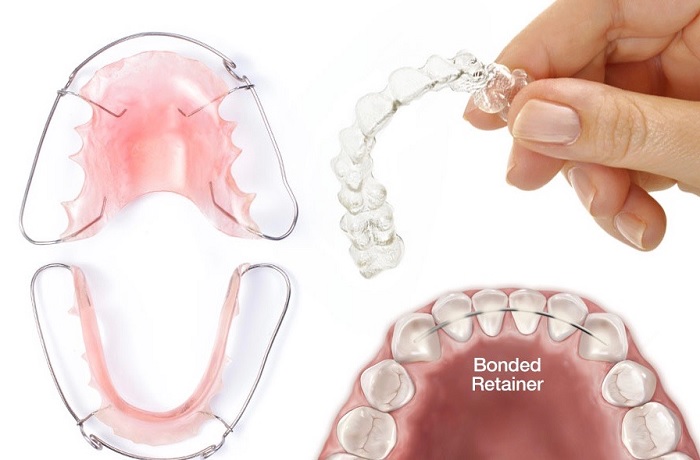At the end of the orthodontic treatment at dental Clinic in Rani Bagh, some retaining devices are placed. The retainers are the devices that are used in the retention phase (post-orthodontic treatment phase).
The purpose of these devices is to give stability to the results obtained in the active phase of orthodontic treatment. The teeth and tissues have not yet been fully adjusted to their new position and these devices are necessary to keep the teeth in their new position, allowing the supporting tissues to settle.
So important is this phase that we consider that, if the patient is not going to collaborate in carrying these devices, as well as in their maintenance, dentist in Rani Bagh recommends that no orthodontic treatment be performed, since the risk of the teeth may suffer unwanted movements (recurrences or movements derived from the pressure of the wisdom teeth) is very high. Therefore, it is essential that the retention phase be considered a continuation of the orthodontic treatment.
Normally in the upper arch it is an invisible sheath and in the lower part a fixed metallic retainer behind the incisors is barely visible. Its function is fundamentally the control of the movement of the teeth, to avoid that they can move and spoil the obtained result. It is important to place it all the time that the orthodontist in Pitampura has advised you. The mouth ages as the skin or eyes, producing small changes that are often imperceptible.
FIXED RETAINERS
The fixed retainers consist of a metal lingual arch that is cemented on the inside of the teeth, usually from canine to canine. This type is the most used by orthodontists, since it does not require proof by the patient for its placement. It is placed in a single session and can last in good condition for years without needing to be renewed. The thickness of the arch exerts enough force to stop the movement of the teeth and prevent them from moving again.
It is logical to think that the fixed retainer is more comfortable than the removable because it does not require the patient's collaboration or its consistency to wear them, however, not always this can be cemented on the lingual side of the maxillary teeth. Why not? Very easy. In many occasions there is no protrusion (space between the upper and lower teeth) to stick it. In addition, the simple tapping of the lower incisors on the upper retainer causes it to detach constantly. This is the reason why dentist in Saraswati Vihar recommends that the retention of the upper teeth be removable except on specific occasions.
REMOVABLE RETAINERS
Within the removable retainers, we can find several types.
- Retention splint It is sometimes confused with the discharge splints used to treat bruxism. These are transparent splints that cover all the teeth and are placed at night. This is the retainer that we usually perform in dental clinic in Saraswati Vihar for maxillary teeth.
- Hawley Retainer. It consists of a retainer formed by an outer arch and hooks that are placed in the molars. The main difference with the retention splints is that it covers part of the palate with an acrylic material.
There are special situations when the patient has periodontal disease (gingivitis or periodontitis) if the patient has a lot of dental mobility, once the treatment is finished, an intracoronary retention is performed.
POST-RETENTION PROTOCOL
There are several retention protocols, each one with its more or less solid criteria. Our experience tells us that:
- We must be absolutely clear when it comes to informing our patients of the importance of retention, as well as the undesirable effects of not taking it or of not continuing to crack its prescription. It is essential to give the recommendations in writing.
- More than 50% of our patientsbegin to neglect the use of their retainers (in our case the superior) one month after the withdrawal of the fixed appliances.
- We must insist that the retention is for life and is your RESPONSIBILITY.
The protocol that we follow regarding retention is the following:
- For the upper arch:2 months full-time after the removal of the fixed appliance. It is only removed to eat and drink. After this time, nightly use for life is recommended by dentist in Pitampura. If you do not wear it any night, you must recover 8 hours during the day.
- For the lower arch: wecement a fixed steel retainer for life.
POST-RETENTION REVISIONS
One year after the withdrawal of the fixed appliances (this revision is mandatory), to evaluate the settlement and the status of the retainers. In this event we insist on the importance of their collaboration. During post-retention visits, we monitor the patient's hygiene, especially in the area where the inferior lingual retainer is cemented. If necessary, we refer the best dentist in Delhi for a prophylaxis of that area. It is of vital importance to mention wisdom teeth in this section , as they are responsible in a high percentage of cases of unwanted movements of the incisors after orthodontic treatment.

No comments:
Post a Comment